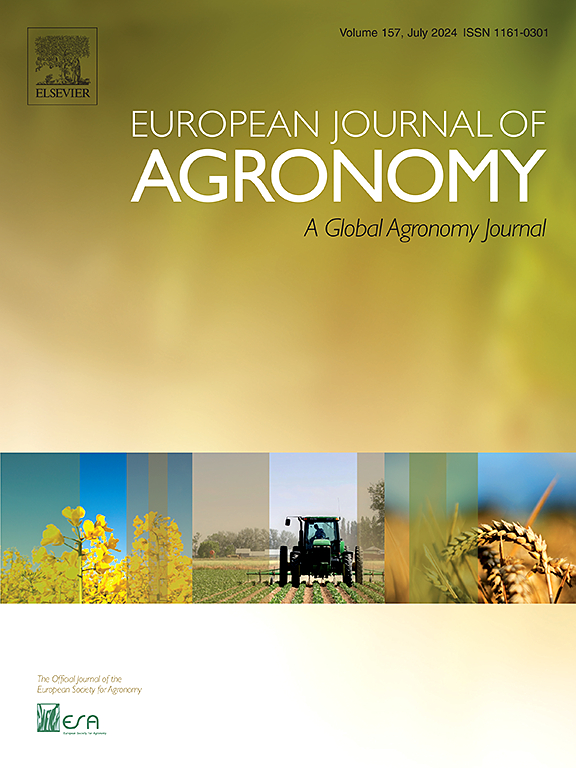Predicting spatial and temporal variability in soybean yield using deep learning and open source data
IF 4.5
1区 农林科学
Q1 AGRONOMY
引用次数: 0
Abstract
Spatial crop yield prediction provides valuable insights for supporting sustainable and precise crop management decisions. This study assessed the capabilities of advanced Deep Learning (DL) architectures in predicting within-field soybean yields using spectral bands from Sentinel-2 (RS-Inputs), weather (W-Inputs), and topographic attributes (TA-Inputs). DL architectures included 1-D convolutional neural network (1D-CNN), long short-term memory (LSTM) and transformer-based (TRFM). We used an extensive dataset ( ∼ 700 K) of yield observations, collected with a combine harvester, from 310 fields across three growing seasons (2020, 2021 and 2022) in Uruguay. The DL architectures were assessed under two testing strategies: across-fields and across-years. We compared results from DL architectures against a baseline that uses a process-based method with data assimilation. Our results revealed that DL architectures outperformed the baseline in testing across-fields only (RRMSE 35 % vs 40 %). The DL architectures encountered more challenges with temporal extrapolation (RRMSE 51 % in across-years). There were no substantial differences in performance among the DL architectures. The TA-Inputs enhanced accuracy in 1D-CNN (reduced RRMSE by ∼ 13 %), while W-Inputs led to a small improvement in 1D-CNN and LSTM (reduced RRMSE by ∼ 2 %) when tested across-years. All combinations of DL architectures and input settings encountered challenges in predicting the tails of the yield distribution (mean bias ∼ 1000 kg ha−1). We discussed the current limitations of DL architectures in capturing crop yield complexity using openly available spatial data and provided further directions for improving the reliability and interpretability of data-driven models by integrating process-based approaches. Beyond this, the performance of data-driven methods alone is expected to improve with the increasing availability of collected and stored data. Incorporating historical yield maps and in-season crop management data into open-source datasets will facilitate continuous training and enhancement for tailored models.
求助全文
约1分钟内获得全文
求助全文
来源期刊

European Journal of Agronomy
农林科学-农艺学
CiteScore
8.30
自引率
7.70%
发文量
187
审稿时长
4.5 months
期刊介绍:
The European Journal of Agronomy, the official journal of the European Society for Agronomy, publishes original research papers reporting experimental and theoretical contributions to field-based agronomy and crop science. The journal will consider research at the field level for agricultural, horticultural and tree crops, that uses comprehensive and explanatory approaches. The EJA covers the following topics:
crop physiology
crop production and management including irrigation, fertilization and soil management
agroclimatology and modelling
plant-soil relationships
crop quality and post-harvest physiology
farming and cropping systems
agroecosystems and the environment
crop-weed interactions and management
organic farming
horticultural crops
papers from the European Society for Agronomy bi-annual meetings
In determining the suitability of submitted articles for publication, particular scrutiny is placed on the degree of novelty and significance of the research and the extent to which it adds to existing knowledge in agronomy.
 求助内容:
求助内容: 应助结果提醒方式:
应助结果提醒方式:


